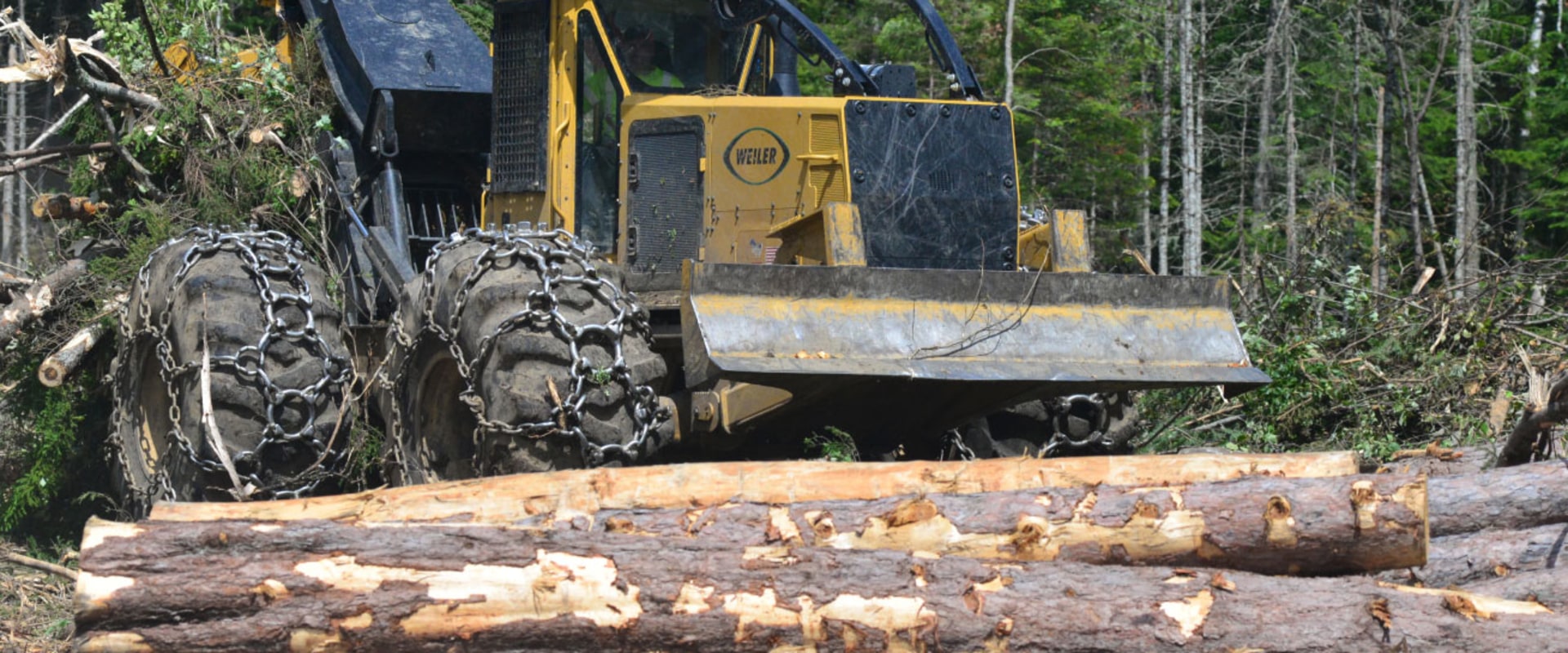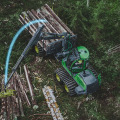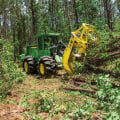As an expert in the forestry industry, I have seen firsthand the dangers of operating heavy equipment in steep terrain. Skidders, in particular, can be challenging to maneuver in these conditions, and without proper training and precautions, accidents can happen.
The Importance of Proper Training
Before even stepping foot on a skidder, it is crucial to receive proper training on how to operate the machine safely. This includes understanding the controls, knowing the weight and limitations of the equipment, and being aware of potential hazards in steep terrain. Many accidents occur due to operators not being familiar with the skidder's capabilities or not knowing how to handle unexpected situations. It is essential to receive training from a qualified instructor and to regularly refresh your skills.Inspecting the Skidder
Prior to using any forestry equipment, including skidders, it is crucial to perform a thorough inspection.This includes checking for any mechanical issues, such as leaks or worn parts, as well as ensuring all safety features are in working order. When operating in steep terrain, it is especially important to check the tires for proper inflation and tread depth. The tires are what provide traction and stability on uneven surfaces, so they must be in good condition. Additionally, make sure all lights and signals are functioning correctly. In steep terrain, visibility can be limited, so having working lights and signals is crucial for safety.
Assessing the Terrain
Before beginning any work with a skidder in steep terrain, it is essential to assess the area carefully. Look for potential hazards such as rocks, stumps, or steep inclines that could cause the skidder to tip over. It is also crucial to identify any obstacles that may impede the skidder's movement, such as fallen trees or large branches.Clearing these obstacles before starting work can prevent accidents and damage to the equipment. Another important factor to consider is the ground conditions. Wet or muddy terrain can make it challenging to operate a skidder safely, so it is best to avoid these conditions if possible. If you must work in these conditions, be sure to take extra precautions and proceed with caution.
Using Proper Techniques
When operating a skidder in steep terrain, it is essential to use proper techniques to ensure safety. This includes keeping a low center of gravity by keeping the load as close to the ground as possible and avoiding sharp turns or sudden movements. It is also crucial to maintain a safe distance from any edges or drop-offs.If possible, try to position the skidder so that it is facing uphill, as this can provide more stability. When loading or unloading logs, be sure to use proper rigging techniques and secure the load before moving. Never overload the skidder, as this can cause it to become unbalanced and tip over.
Communicating with Others
In any forestry operation, communication is key. When working with a skidder in steep terrain, it is crucial to communicate with others on the job site. This includes letting others know where you will be working and when you will be moving the skidder. If there are other workers in the area, make sure they are aware of your movements and stay clear of the skidder's path.It is also important to have a spotter when operating in steep terrain, as they can help guide you and alert you to any potential hazards.
Regular Maintenance and Inspections
To ensure the safe operation of a skidder in steep terrain, it is essential to perform regular maintenance and inspections. This includes checking all fluid levels, replacing worn parts, and keeping the skidder clean and free of debris. It is also important to inspect the skidder after each use, looking for any signs of damage or wear. If any issues are found, they should be addressed immediately to prevent accidents or breakdowns.Conclusion
Operating a skidder in steep terrain can be challenging, but with proper training, precautions, and techniques, it can be done safely. It is crucial to always prioritize safety and to never take shortcuts when it comes to operating heavy equipment. Remember to regularly refresh your skills, inspect the skidder before each use, assess the terrain carefully, use proper techniques, communicate with others, and perform regular maintenance and inspections.By following these tips from a forestry equipment expert, you can safely operate a skidder in steep terrain and avoid accidents or injuries.







